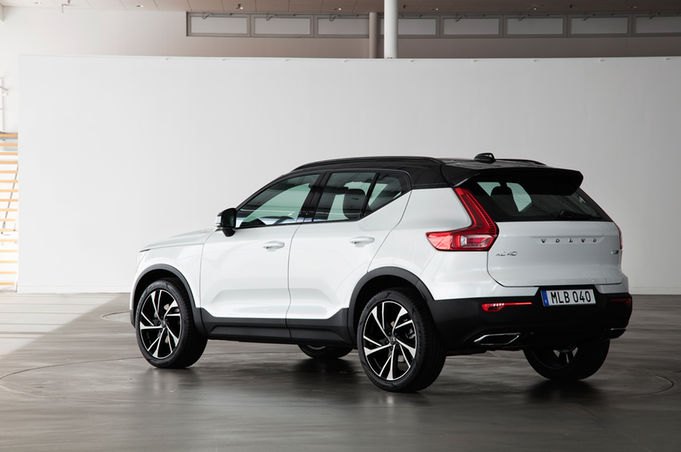The Six Vehicles That Wildly Outdid Reasonable Sales Expectations in America in August 2020
Gauging economic health during the latter stages of 2020 is proving remarkably challenging. On the one hand, there’s grievous unemployment caused by COVID-19 shutdowns; on the other hand, bicycle sales are booming and backyard pool installations skyrocketed. Contrast the fact that the Dow Jones isn’t far from its six-month high with a 32 percent U.S. GDP loss in Q2.
The same sort of diametrically opposed outcomes are visible in the U.S. auto industry, as well. Only a handful of automakers still report monthly sales figures – Honda, Hyundai, Kia, Mazda, Subaru, Toyota, Volvo – yet within those brands there were remarkably different results coming out as we exit the summer. We wanted to find the vehicles that destroyed reasonable recovery rates in August with significant year-over-year improvements. But we didn’t expect them all to originate from the same two automakers.
To get a clear gauge on the biggest overperformers, we excluded vehicles that didn’t produce at least 500 sales in August 2020, the kind of volume that should eliminate the wild fluctuations of severely low-volume models. Vehicles that are new to market or returning from hiatus (say hello to the second-generation Toyota Venza) are ineligible, as well.
Sales at the 10 remaining reporting brands are down 19 percent through the first two-thirds of 2020 and were still off last year’s pace by 18 percent in August 2020. Yet within those showrooms, there were six models that, despite everything that’s wrong with 2020, sold in far greater numbers last month than during the same period one year ago.
Timothy Cain is a contributing analyst at The Truth About Cars and Driving.ca and the founder and former editor of GoodCarBadCar.net. Follow on Twitter @timcaincars and Instagram.
More by Timothy Cain
Latest Car Reviews
Read moreLatest Product Reviews
Read moreRecent Comments
- Mason Had this identical car as a 17 year old in the late 90's. What a ball of fun, one of many I wish I still had.
- FinnEss At my age, sedans are difficult to get into without much neck and hip adjustment.I apologize sincerely but that is just the way it is. A truck is my ride of choice.Pronto
- Ajla The market for sedans is weaker than it once was but I think some of you are way overstating the situation and I disagree that the sales numbers show sedans are some niche thing that full line manufacturers should ignore. There are still a sizeable amount of sales. This isn't sports car volume. So far this year the Camry and Civic are selling in the top 10, with the Corolla in 11 and the Accord, Sentra, and Model 3 in the top 20. And sedan volume is off it's nadir from a few years ago with many showing decent growth over the last two years, growth that is outpacing utilities. Cancelling all sedans now seems more of an error than back when Ford did it.
- Duties The U.S . would have enough energy to satisfy our needs and export energy if JoeBama hadn’t singlehandedly shut down U.S. energy exploration and production. Furthermore, at current rates of consumption, the U.S. has over two centuries of crude oil, https://justthenews.com/politics-policy/energy/exclusive-current-rates-consumption-us-has-more-two-centuries-oil-report.Imagine we lived in a world where all cars were EV's. And then along comes a new invention: the Internal Combustion Engine.Think how well they would sell. A vehicle HALF the weight, HALF the price that would cause only a quarter of the damage to the road. A vehicle that could be refueled in 1/10th the time, with a range of 4 times the distance in all weather conditions. One that does not rely on the environmentally damaging use of non-renewable rare earth elements to power it, and uses far less steel and other materials. A vehicle that could carry and tow far heavier loads. And is less likely to explode in your garage in the middle of the night and burn down your house with you in it. And ran on an energy source that is readily extracted with hundreds of years known supply.Just think how excited people would be for such technology. It would sell like hot cakes, with no tax credits! Whaddaya think? I'd buy one.
- 3SpeedAutomatic I just road in a rental Malibu this past week. Interior was a bit plasticity, but, well built.Only issue was how “low” the seat was in relation to the ground. I had to crawl “down” into the seat. Also, windscreen was at 65 degree angle which invited multiple reflections. Just to hack off the EPA, how about a boxy design like Hyundai is doing with some of its SUVs. 🚙 Raise the seat one or two inches and raise the roof line accordingly. Would be a hit with the Uber and Lyft crowd as well as some taxi service.🚗 🚗🚗








































Comments
Join the conversation
Volvo may be showing a big increase year-over-year, but they are still selling tiny numbers of cars. So why does it really matter? Hopefully they are selling enough to stay around for a while. I'm all for driving things you don't see 25 of in every parking lot though.
Kia is the next Toyota.